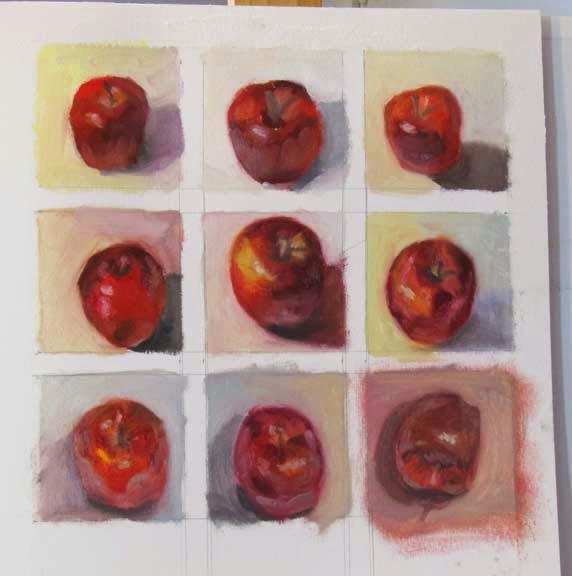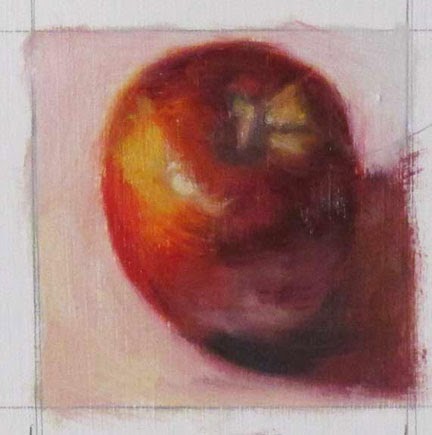"She said to me
The answer is easy if you
Take it logically
I'd like to help you in your struggle
To be free
There must be fifty ways..."
~ Paul Simon
 |
| An early attempt at a still life with nautilus. |
Beautifully rendered paintings don't happen overnight. So many beginners (and some more advanced artists) give up on art because of the overwhelming frustration of not being able to produce what they see in their heads. It is incredibly discouraging when it doesn't go right, when you start to question why in the world you are torturing yourself like this. Good art takes practice, perseverance, and many many mistakes. Typically we don't get to see the mistakes of other artists though, only the final perfect piece which looks dishearteningly effortless. I think this adds to the unrealistic expectations we have of ourselves. So I'm going to share a whole series of abandoned and what I would consider sub-par paintings that I've done while attempting to render a particular subject to my liking.
You may remember my slight obsession with the seashells that my father-in-law gave me this summer, particularly a beautiful chambered nautilus. It sits in a place of honor in my studio and often calls me to draw and paint it. It turns out a nautilus is a challenging shape to render. It's not a circle, yet the brain - or at least my brain - keeps jumping to conclusions and I find myself constantly having to reevaluate the shape as I paint. This leads to overworking the painting and making the edges of the shell too hard; then the shell either ends up looking flat or like a cut-out.
And then there are those darn stripes! The painting above had potential, but I got intimidated by the stripes and quit. The stripes have to follow the shape of
the shell, not only in direction, but in value and color saturation to
match the shell's curvature and shadow. If the shadow part of the stripe
doesn't match the shadow part of the shell, it won't make sense to the
eye. Eeek! I was so nervous about messing up the stripes that my hand was shaking as I tried to paint them.
 |
| Another attempt at a still life with nautilus. |
Here's another try at the stripes. Before I added the stripes the nautilus shell itself had pretty good form, but I didn't get the values right on the stripes as they curve and go into shadow. Too many attempts to fix the problem muddied the colors and created too many sharp edges and the shell ended up looking fairly flat.
I got some very helpful critiques from other artists and what they said made sense; I just couldn't seem to put their advice into practice. At that point, I just wanted to abandon painting the nautilus. I painted many other subjects in-between, but that nautilus mocked me every time I went into my studio. It would catch my eye as I painted other things. It fascinated me and called to me. I wanted to paint it so badly! Maybe I needed to take a deep breath and approach this in a different way; be logical about it, since I was so emotional about it. There's a reason all those Master painters did study after study of things, before they even started on a full-blown painting. And so I broke down and painted the nautilus again.
 |
| Nautilus study I |
And again...
 |
| Nautilus study II |
And again...
 |
| Nautilus study III |
This last study, in which I took a deep breath and added the stripes, is the closest I've come to what I want, so far. I even managed to get that sense of mother-of-pearl on the interior of the shell. I now have hope that I can successfully include a nautilus in a painting after all. There are definitely things I can still do to improve it, but that thrill of accomplishment, the sense of victory after so many defeats, is a bit intoxicating and probably is what drives us to do this crazy thing called art in the first place.
















































